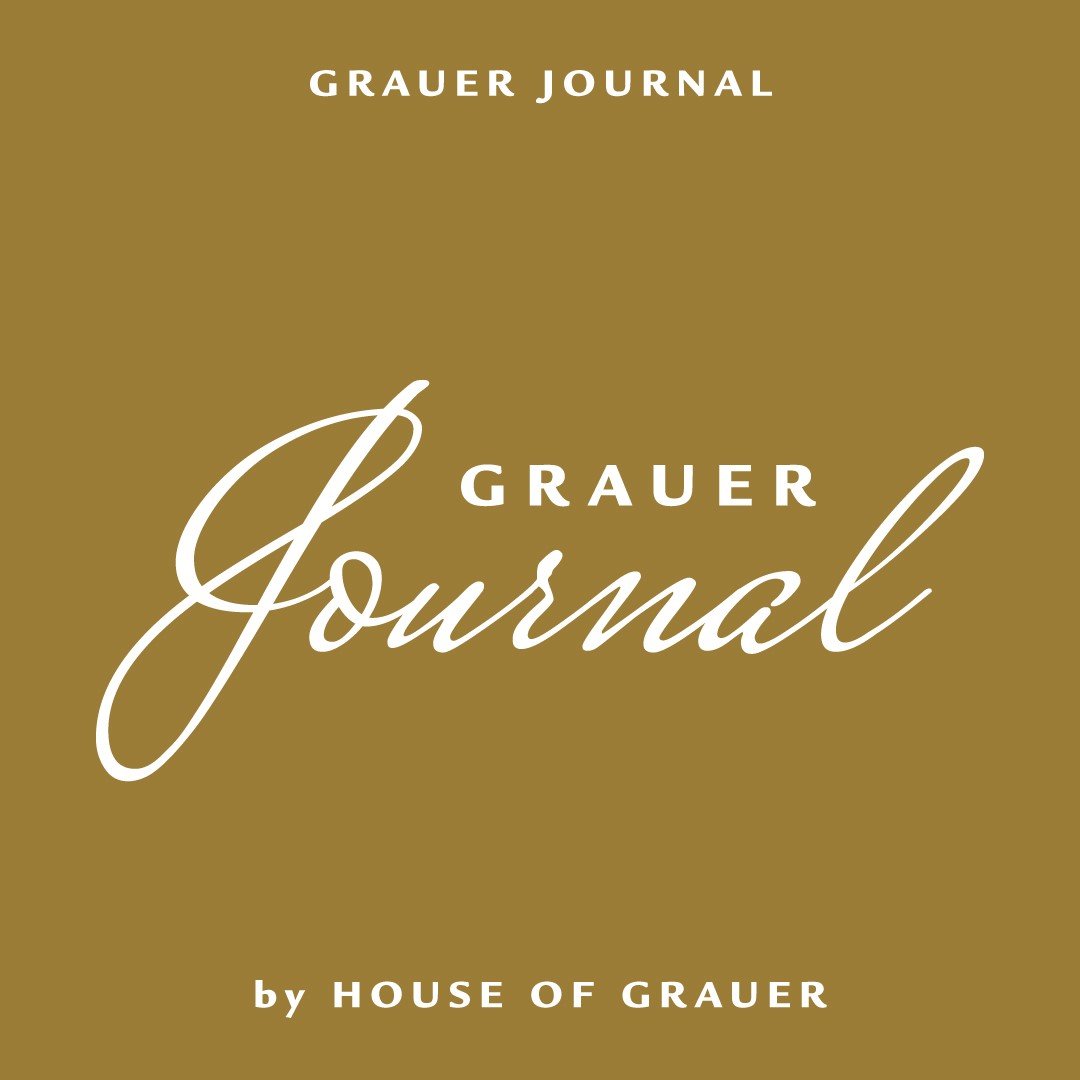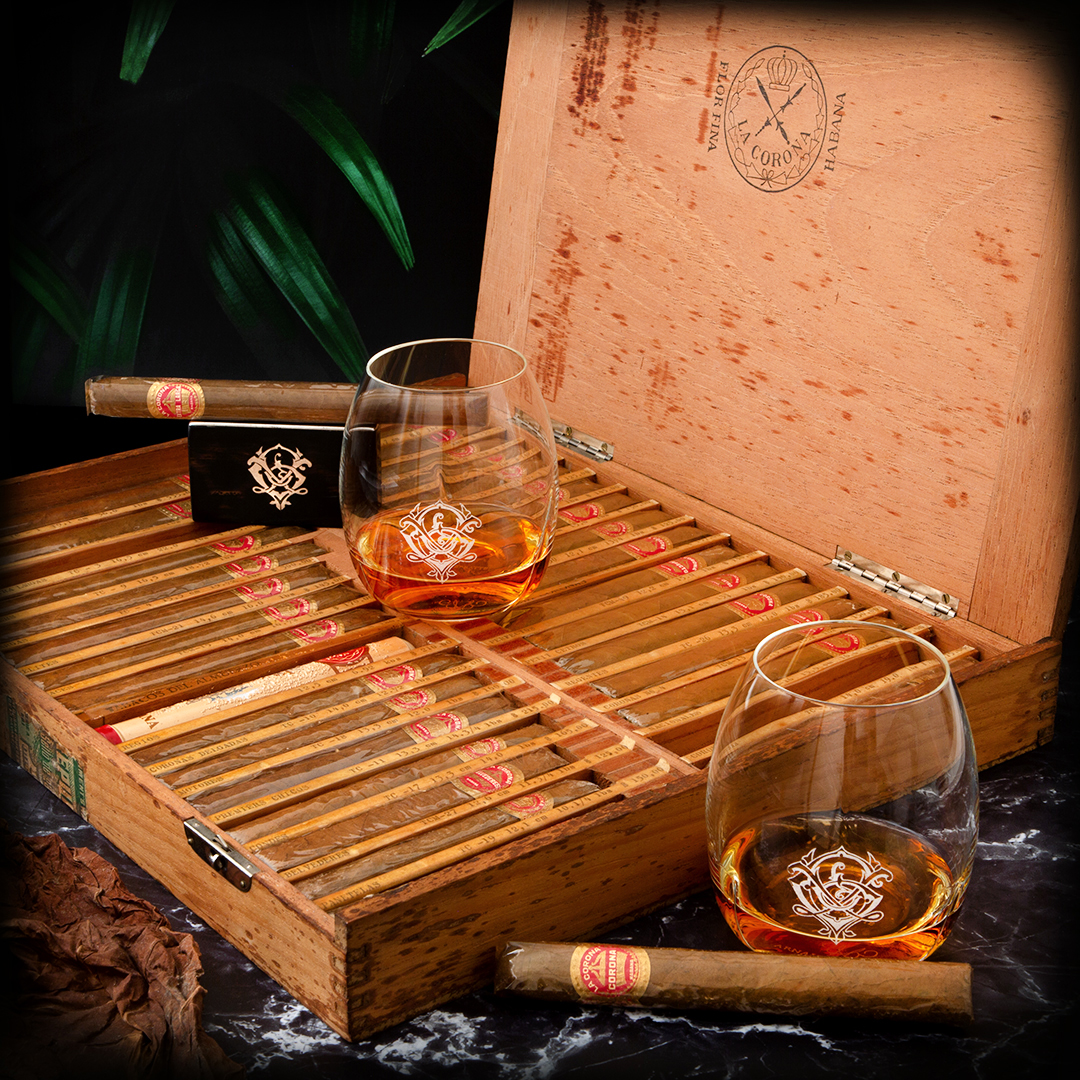La Corona Factory Presentation Case 1953
A very special cigar box designed to introduce the vitolario!
Composed of 32 different cigars, this rather special box dates back to the early 1950s. More precisely from 1953, the year of the beginning of the Cuban Revolution (1953 - 1959). As you will discover in the Art and Culture article of this Grauer Journal, beyond coinciding with the Cuban Revolution, this period also corresponds to the apogee of the La Corona cigar brand.
Indeed, before being a factory, La Corona was one of the most important cigar brands of the twentieth century due to its popularity, especially in the United States.
With this in mind, the brand developed this box, which was made especially for commercial purposes. It was designed to hold a sample of each of the vitolas produced at the time in order to illustrate the range.
Thus, carefully arranged in order of size in this demonstration box, these are the 32 cigars available for sale in Cuba in 1953. In Cuba, this precision is important because at that time, the production of La Corona cigars was managed by the American Tobacco Company. In 1932, the American Tobacco Company decided to transfer part of the cigar production to Trenton, New Jersey, in the United States, after having built a new factory there; thus leaving Tabacalera Cubana S.A. (originally Havana Cigar and Tobacco Company) to produce for the Cuban domestic market. The cigars produced at that time were different depending on whether they were destined for Cuba or the United States, in order to best meet the expectations of the respective consumers in both countries.
The "Made in Havana-Cuba" box stamp on the back of the cigar is a clear indication of the box's origin. Moreover, on each of the edges separating the cigars we can see the inscriptions "TC" or "TCM", meaning respectively "Tabacalera Cubana" and "Tabacalera Cubana Mecanizada".
In addition to this information, the name of the cigar, its measurements and its price, expressed in US dollars, are written under each vitola.
With the exception of the Regios, which is in Tubos, the other 31 cigars are individually wrapped in cellophane. Cellophaning of cigars began in Cuba in the mid-1930s and until 1992 most Cuban cigars (even Cohibas) were available in cellophane.
Let's now look at the bands on these cigars. Although close to the brand's standard band, which was reintroduced in 1989 when Habanos re-launched the brand, they are visually slightly different. Despite these differences, the bands from that time already sported the beautiful bright red colour that highlights the gold embossed designs.
However, if you look at them more closely, you will notice that almost all the bands of the 32 cigars in the box are different. Some bear the crown, the brand's emblem, others are personalised with the name of the cigar, and yet another displays the crown logo underlined by two crossed swords. The logo is also found on the inside of the box lid.
Note that among the bands personalised with the name of the cigar they dress, such as the Belvederes or the Coronas Extra Largas, the Coronas has lost the "s".
Another band caught our attention, the Brevas. Indeed, this one has nothing to do with the others. Stamped "Henry Clay", it bears no sign of belonging to La Corona.
It is difficult to explain the presence of this band on this particular vitola, but what we can say is that in 1889, the two partners in La Corona, Perfecto López and Segundo Álvarez, sold part of their shares to the company Henry Clay and Bock Ltd, financed by British capital. Thus, at the time this Brevas was rolled, Henry Clay and Bock Ltd was one of the shareholders of La Corona.
Returning to the box itself, on the edge is the guarantee seal of the "República de Cuba", printed in dark green ink. Still in use today, this bucket was introduced in 1902 when Cuba gained official independence from the United States. Since its introduction, however, it has undergone a few modifications, including in 1912, 1931, 1999 and 2009.
The one on our 1953 box corresponds to the one in circulation from 1931 to 1961. The particularity of the seal of this period is that it has serrated edges in the manner of a stamp.
Although there is a great deal of evidence as to the origin and age of this La Corona cigar presentation box, there is no information as to how many boxes were produced. This example, which was not originally intended for sale but to be sold, contains cigars in an exceptional state of preservation. Dating back to the glory days of a Cuban cigar brand, now unfortunately extinct, it is worth savouring the precious contents on very special occasions. These vitolas, which have nothing to do with the "Machine-made" ones that went into production in 1898 when Habanos decided to relaunch the brand, constitute a real piece of the history of La Corona and more widely of the Cuban cigar.
Discover the contents of the La Corona Factory Presentation Case:
La Corona Estupendo
La Corona Grandes
La Corona Coronas Extra Largas
La Corona Premiers
La Corona Largas
La Corona Elites
La Corona Aces
La Corona Tabacos del Almuerzo
La Corona Regios
La Corona Coronas Delgadas
La Corona Motores
La Corona Premiers Chicos
La Corona Condes
La Corona Belvederes
La Corona Panetellas
La Corona Figisas
La Corona Breakfast
La Corona Half-A-Coronas
La Corona N.P.U. Coquetas
La Corona Demi-Tasse
La Corona Conchas
La Corona Regalia C.I.F.
La Corona Londres
La Corona Dianas
La Corona Petit Coronas
La Corona Perfectos
La Corona Petit Cetros
La Corona Regentes
La Corona Coronas No. 4
La Corona Nacionales
La Corona Coronas
La Corona Coronas Brevas
LA CORONA - Factory Presentation Case 1953 - Box of 32
Login to your online account to reserve your item
or contact us at +41 22 552 2799


